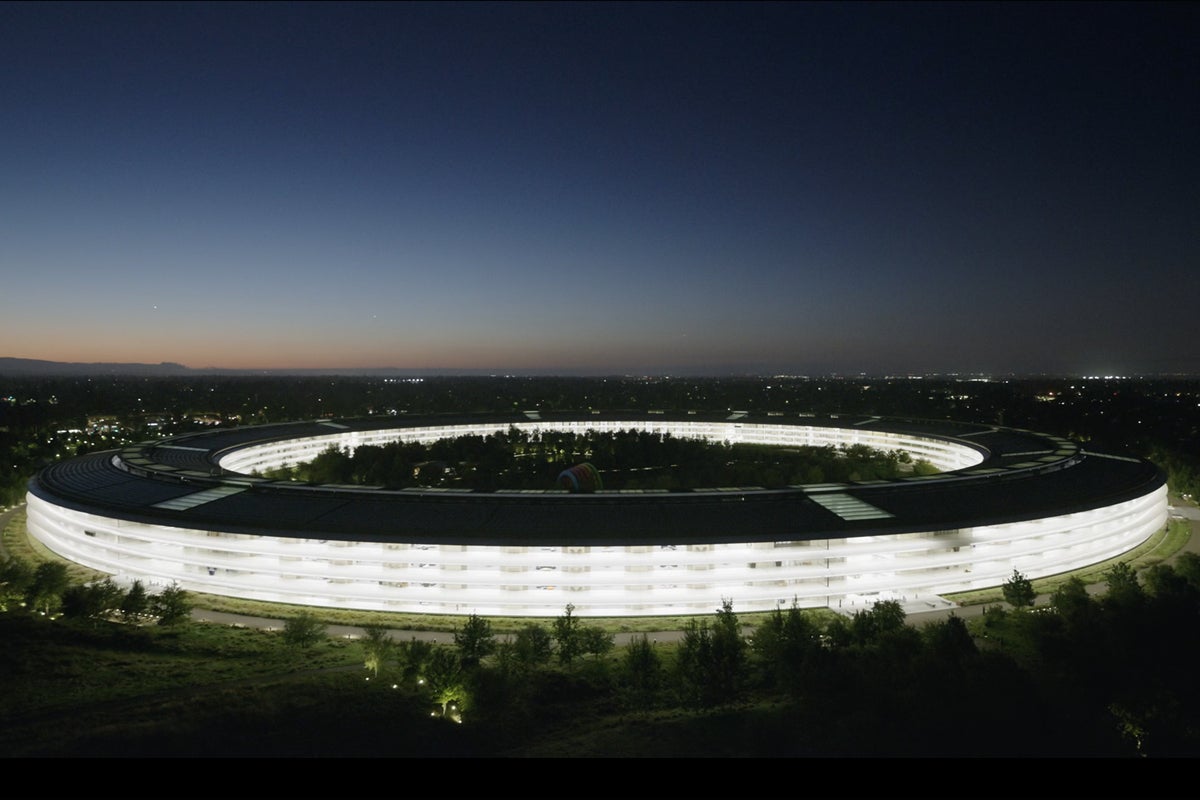Apple’s $117.2 billion Q1 misses earnings expectations
Apple is not, after all, immune to market pressures. The company on Thursday said revenues were down 5% year on year in the final three months of 2022, though supply chain problems seem resolved and the installed base has hit two billion active devices.
img.feature-img
width: 100%;
height: auto;
Apple on Thursday reported revenues of $117.2 billion in the first fiscal quarter, off 5% from a year earlier. While there were several bright spots, the financial report confirmed iPhone supply challenges plagued the company in the last three months of 2022, compounded by the effects of a strong dollar.
The numbers game
The overall numbers tell the story:
- Product sales generated $96.3 billion compared to $104.4 billion in Q1 FY 22.
- Services generated $20.7 billion, up from $19.5 billion a year ago.
Apple’s execs cited a difficult foreign exchange environment and supply chain challenges as the main problems. They explained the company revenue did grow on a “constant currency basis” — though the currency wasn’t constant and revenue didn’t grow as a result.
It could have been worse. Apple had anticipated the strong dollar would shave 10% off company revenue; the actual impact was 8%.
Notably, research and development spending rose considerably, from $6.3 billion in Q1 FY 22 to $7.7 billion in the most recent quarter. That’s a big increase as Apple preps new products and services over the coming 12 months.
And while quarterly revenue was down from the year ago quarter, it was up on every other quarter back to 2018. The company also returned its second-highest ever earnings per share, iPhone and services revenue in the quarter.
Apple stressed continued growth in services and said it now has two billion active devices “as part of our growing installed base,” according to CEO Tim Cook. Apple has doubled its installed base in the last seven years.
“As we all continue to navigate a challenging environment, we are proud to have our best line-up of products and services ever, and as always, we remain focused on the long term and are leading with our values in everything we do,” Cook said.
Selected hardware data
When it comes to hardware, the company saw a decline in every category bar iPads and services, with iPhone sales affected to the tune of roughly $6 billion. Mac sales also suffered, as the COVID-driven replacement/deployment cycle slowed. The slack may also reflect a later-than-expected January product refresh.
Apple no longer breaks out sales by model, but the decline may confirm speculation that consumers are skewing toward high-end iPhones and upgrading less frequently. Cook said consumers seem to try to get the best device they can.
Here’s the specific data from the report.
- iPhone: $65.7billion, down just over 8% from $71.6 billion.
- Mac: $7.7 billion, down 28.6% from $10.8 billion.
- iPad: $9.3 billion, up 29.6% from $7.2 billion.
- Wearables, Home, Accessories: down from $14.7 billion to $13.4 billion.
- Services: $20.7 billion, up 6% from $19.5 billion.
The trouble with iPhone
As Apple warned last year, iPhone supply undermined the quarter’s results. “What we estimate, although not with precision, is that we believe iPhone would have grown during the quarter and had it not been for the supply shortages,” Cook told analysts after the earnings were released.
He also stressed that as iPhones have become more popular, consumers are more “willing to really stretch to get the best they can afford in that category.” That’s as close as we’ll get to confirmation of a preference for pro models.
Apple also confirmed that supply chain problems have largely been resolved. “We’re in decent supply on most products for the quarter,” said Cook. The company continues to invest in new production chains.
Apple saw record levels of switchers in India and Mexico as surveys continue to claim 98% customer satisfaction with iPhone.
The strategic advantage of Apple Silicon
On PC sales, Cook put it this way: “The industry is very challenged. I don’t know how this year will play out, so I don’t want to predict this year. But, over the long run, we have a market that is a reasonably sized market, we have low share, and we have a competitive advantage with Apple Silicon. So, strategically I think we’re well positioned in the market, albeit I think it will be a little rough in the short term.”
The move to Apple Silicon continues to generate benefits. Mac customer satisfaction sits at 96% and the installed base of Macs has hit an all-time high across all Apple’s geographic segments. iPad sales rose and the installed base reached a new high.
Cook also discussed Apple Silicon production when it takes place at TSMC’s forthcoming facility in Arizona. “We’re all in in terms of being the largest customer for TSMC in Arizona,” he said. “I’m very proud to take part in that.
“America is our home,” he told FBN. “We want to do as much as we can here. We have an Advanced Manufacturing Fund to spend here.”
Engagement + installed base = $20B quarter
Cook confirmed some key gains in services:
- More than 935 million paid subscriptions, up 150 million on the year and four times greater than five years ago.
- Double-digit revenue growth from App Store subscriptions.
- All-time records across categories including cloud, music, and payment services.
But what may be of most significance is engagement in Apple’s services.
“We saw growing customer engagement with our services during the quarter,” said Luca Maestri, senior vice president and CFO. The company confirmed earlier claims that the last holiday shopping season saw “record” use of Apple Pay for purchases.
On China and emerging markets
In what may be good news for western luxury brands across the board, Apple confirmed that the removal of COVID restrictions in China is improving its business there.
“With the reopening in December, we’ve seen an increase in traffic compared to November, “Cook said.
Apple continues to invest in emerging markets, and it claimed strong growth in Brazil, Mexico, India, Indonesia, Thailand, and Vietnam. It also claimed to have set iPhone revenue records in India and Vietnam.
“We’re in essence taking what we learned in China years ago, how we scaled China, and bringing that to bear,” said Cook.
The company stressed that services adoption is accelerating at a similar rate in all its markets, and it sees customer engagement with hardware translate into engagement with its services.
On the enterprise
Apple now has a wide tranche of services aimed at enterprise and pointed to a handful of recent product wins.
- Confectionery giant Mars Inc. has signed up for Apple Care for Enterprise to support the iPads it has at its manufacturing sites.
- HCA Health Care is now running an annual iPhone refresh with help from Apple Financial Services.
Looking forward
While they attempted to put a positive spin on the results, Apple executives did not pretend everything is rosy. Looking forward into the next quarter, Apple anticipates iPhone revenue to accelerate, but expects Mac and iPad revenue to decline double-digits year on year.
“We expect a negative year-over-year impact of five percentage points…,” Maestri said. “In total, we expect our March quarter year-over-year revenue performance to be similar to the December quarter.”
Gross margins look far from slim, however, at between 43.5% to 44.5%.
On layoffs
Apple isn’t laying people off. Cook stressed that while hiring has slowed and become far more strategic, the company sees layoffs as a “last resort” the company wants to avoid.
“I view layoffs as a last resort kind of thing,” Cook told the Wall Street Journal. “You can never say never. We want to manage costs in other ways to the degree that we can.”
What the analysts think
Apple’s results echo a broader decline across tech stocks – but its direction of travel seems a little clearer. Both Amazon and Alphabet expect further weakening in core markets in the next quarter, and while Apple concedes weakness, it is also seeing reasons for growth.
This morning has seen some activity on Apple stock. Barclays (which only recently cut targets on the stock) and BofA have raised targets, while Piper Sandler has chosen to maintain its $195 per share price target.
“Apple is optimistic about the strong momentum of future development,” analyst Harsh Kumar wrote.
Counterpoint Research Director, Jeff Fieldhack said: “Having proficiently managed its production problems, Apple was able to weather a year already marred by economic and geopolitical turmoil better than other major smartphone players.”
“Bears will be quick to point out negative sales growth but we note when adjusting for FX that sales and outlook are flat, which is materially better than other consumer electronic companies,” wrote Citi analyst Jim Suva. “Importantly services are also outperforming and Apple’s installed base continues to grow (over 2 billion active Apple devices and iPhone installed base estimated at 1.2+ billion).”
“Apple has only missed three out of the almost 60 quarters I’ve followed the company,” wrote analyst Gene Munster. “I’m happy to report, despite the shortfall, the core business is intact. The reason; Apple’s customer base remains in love with and loyal to their products.”
Please follow me on Mastodon, or join me in the AppleHolic’s bar & grill and Apple Discussions groups on MeWe.
2023-02-04 23:00:03 Apple’s $117.2 billion Q1 misses earnings expectations
Post from www.computerworld.com It’s been a tumultuous start to 2021 for Apple, as the tech giant missed its earnings expectations for its first fiscal quarter of 2021. The company reported a total revenue of $117.2 billion for its fiscal first quarter, down from the expected $118.36 billion consensus.
The first fiscal quarter’s performance was largely due to slower-than-expected sales of iPhones, despite the introduction of the Apple 5G. iPhone sales fell to $65.6 billion, a 4% year-over-year decrease. Sales of the iPhone 12 were less than anticipated, due to economic uncertainty, financial constraints, and delayed upgrades from customers during the early stages of the pandemic.
On the bright side, Apple saw robust growth in its services business with an 18% year-over-year increase to $15.8 billion. This was driven by increased customer engagement on Apple’s digital services including Apple TV+, Apple Music, iCloud, and Apple Arcade.
In addition, Apple had strong sales of its “Wearables, Home and Accessories” segment, which increased 27% year-over-year to reach $12.7 billion. This was due in large part to strong sales of the AirPods, Apple Watch and HomePod products.
The disappointing earnings report despite Apple’s record revenues highlights the company’s challenge of moving beyond its long-standing reliance on iPhone. This report is an eye-opener for Apple investors and necessitates a shift in strategy to focus on boosting Apple’s services business, as well as its non-iPhone offerings. Doing so would help Apple to continue to grow despite the ongoing challenges of the global pandemic.

















